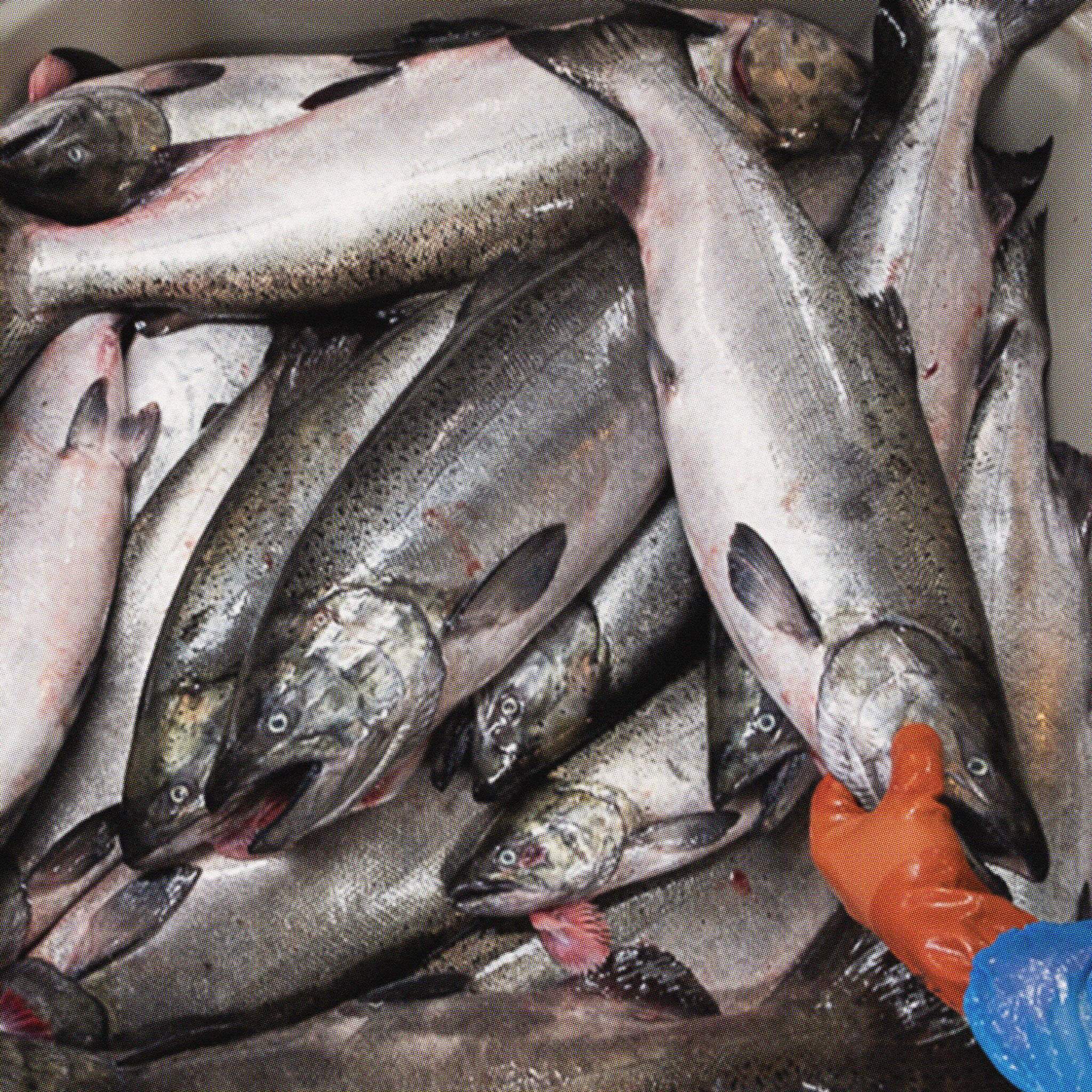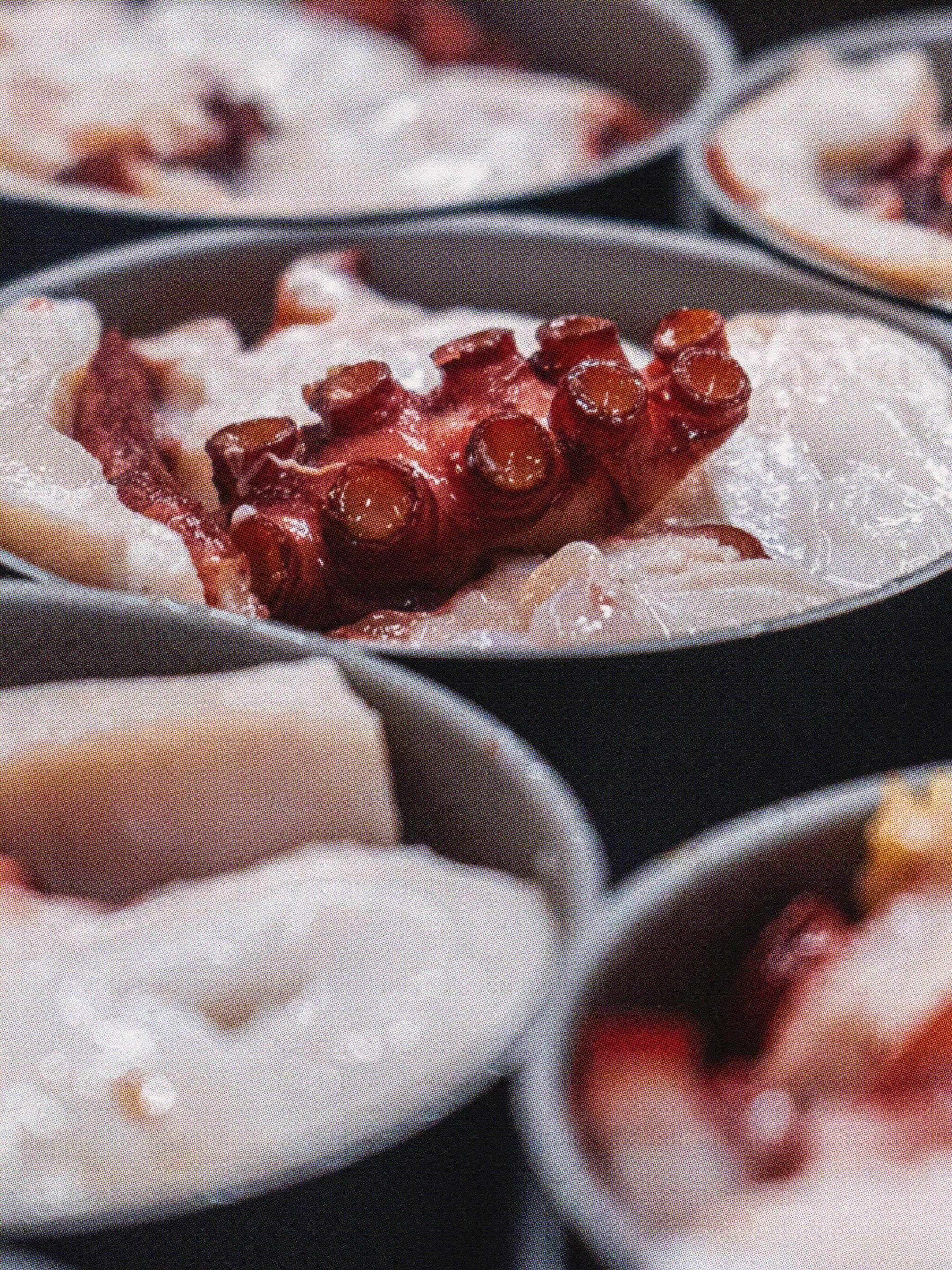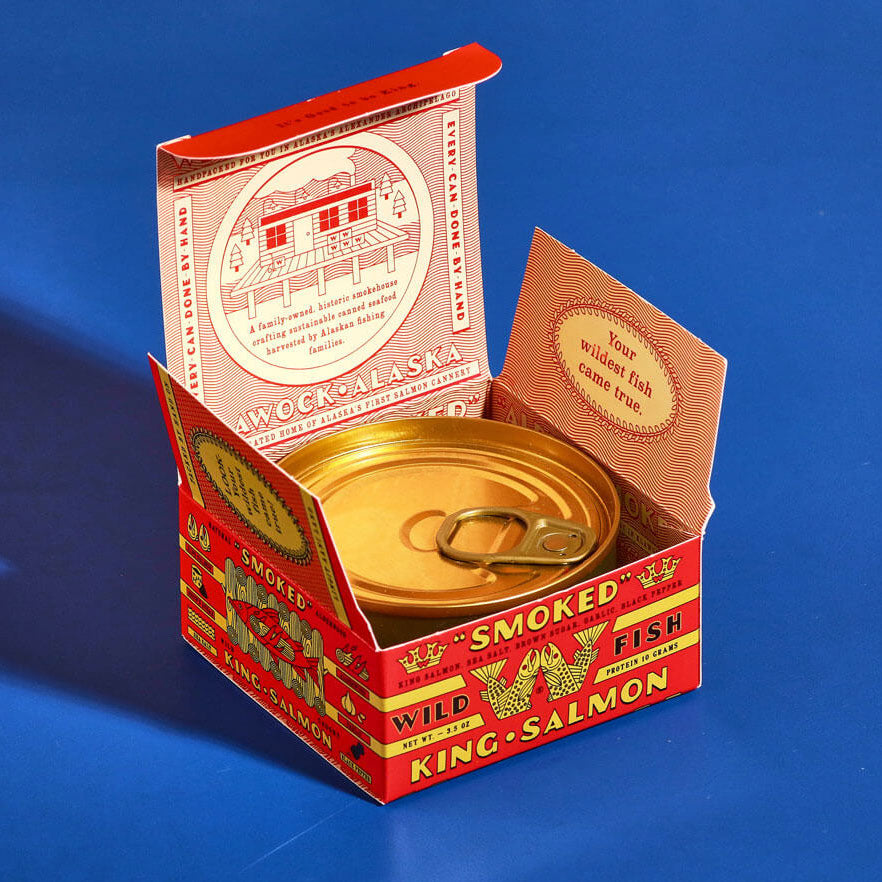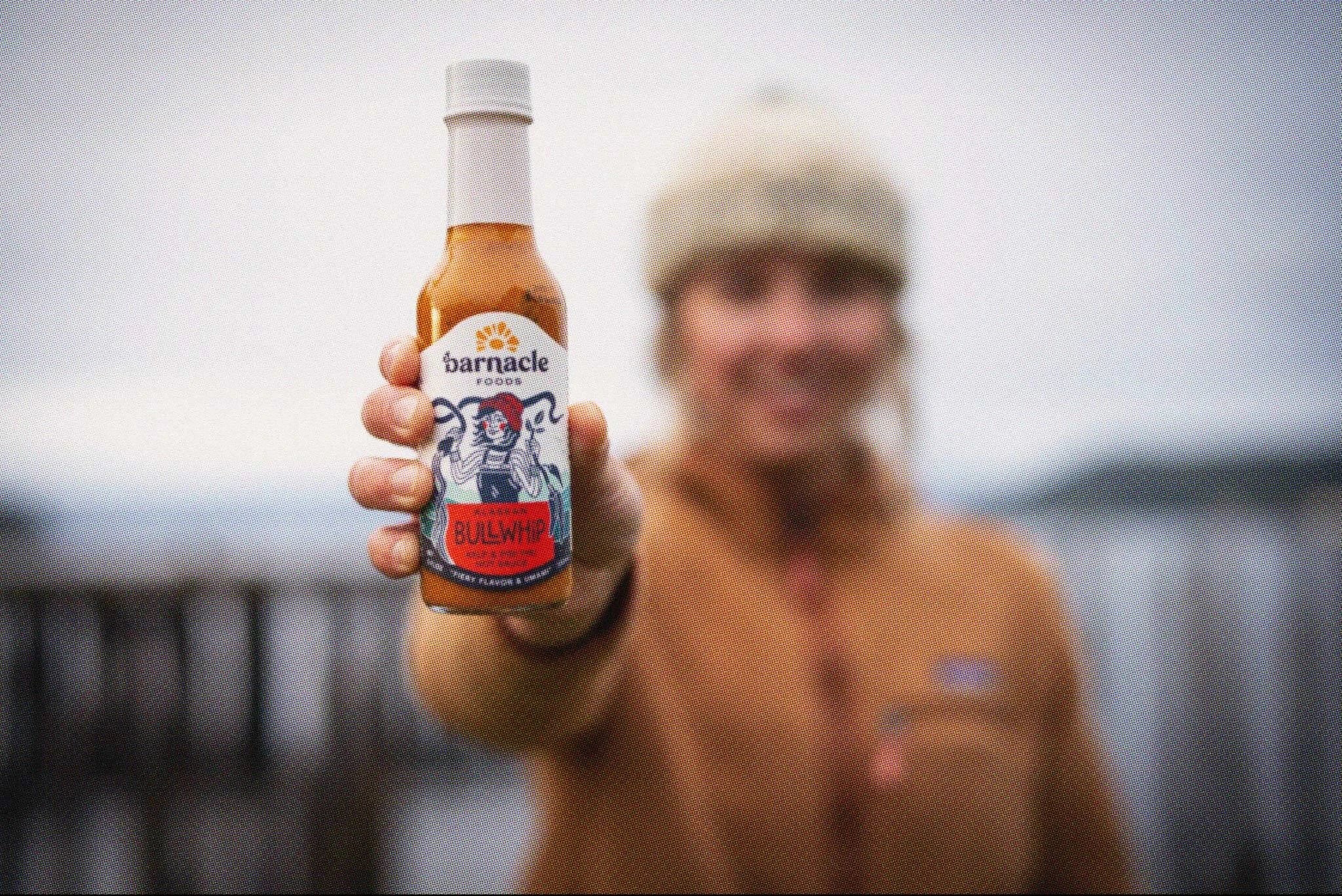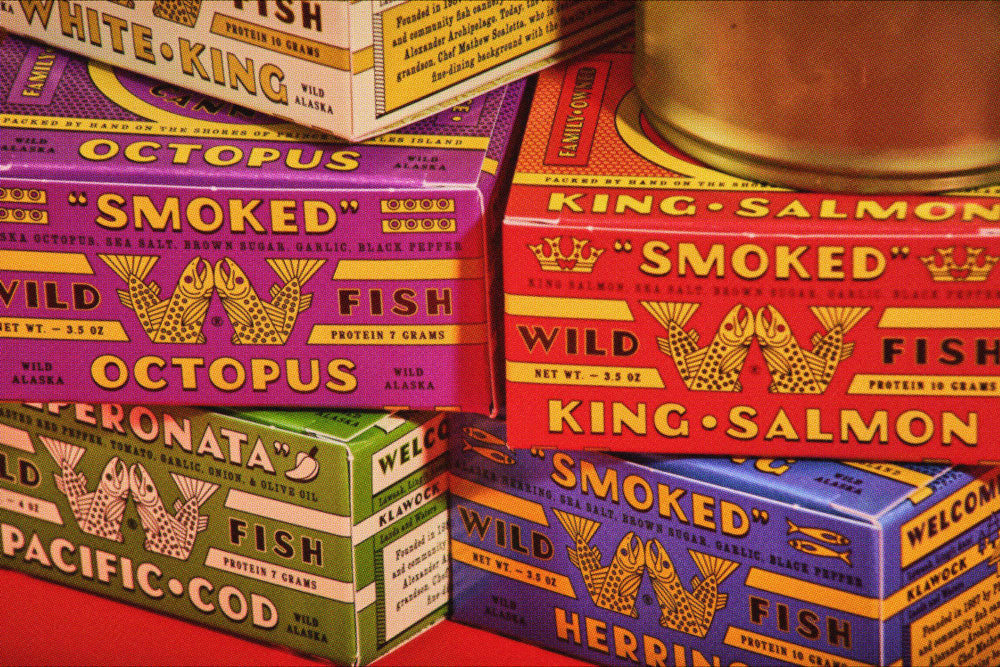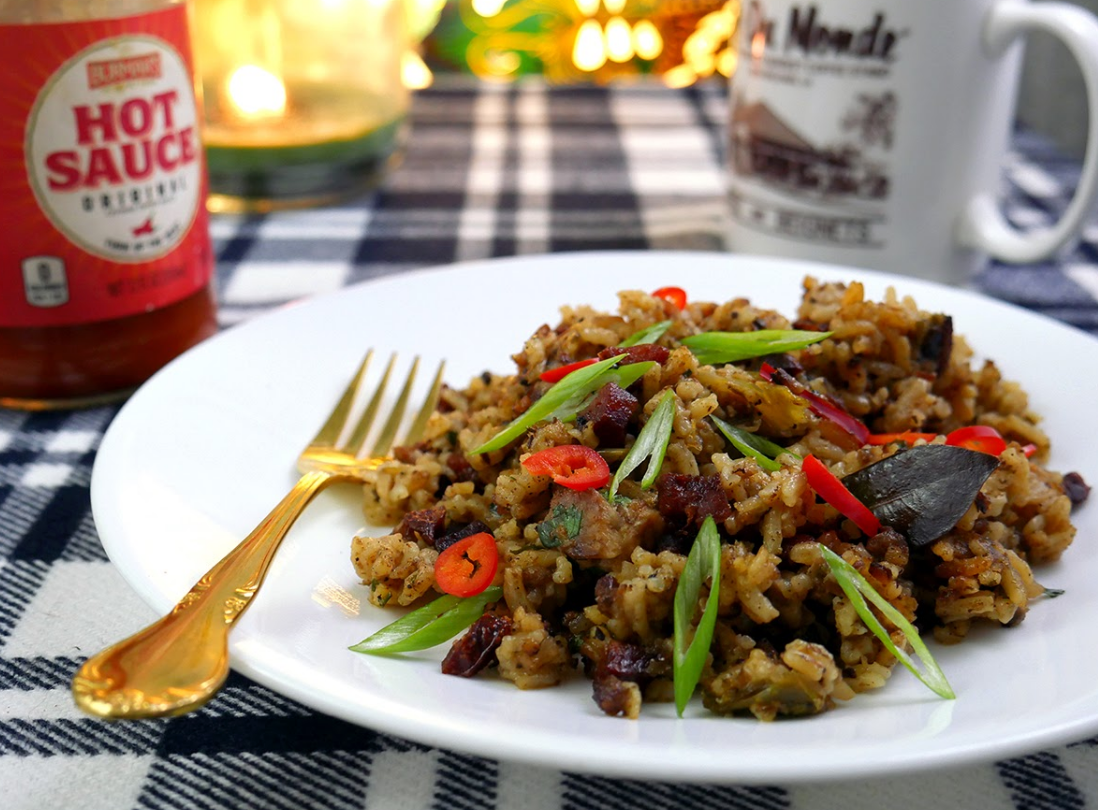

· By Mathew Scaletta
Galley Musings: A Dirty Rice Journey (Part I)
Looking for our Smoked Herring Dirty Rice recipe? You can find it here. If you have a little extra time, read on!
Dirty rice recipes are as numerous as the cooks who prepare them. We say that about a lot of classic dishes, and it’s true. Ingredients and methods are always up to the cook to adapt as needed or desired. Cook wildly and passionately! Make substitutions, and create new worlds of flavor! Go ahead and do it!
Dirty rice was a dish born out of necessity, traditionally using what was available—similar to our Fisherman's Stew! The dish is a reliably hearty and filling method for stretching a meager supply of proteins or vegetables across a canvas of clean, white starch. It’s an equally great way to clean out the refrigerator, but its history actually predates refrigeration.
A Very Brief History of Dirty Rice
Though now almost universally adored as a staple of Cajun and Creole cuisines, dirty rice originated on Southern plantations during a particularly shameful period in American history. When chickens were slaughtered, the birds themselves went to the plantation owner’s table. Enslaved people were left with the livers, gizzards, heart, and kidneys. These were cooked, minced, and incorporated into rice with whatever else seemed to complement the pot.
The “dirty” part of “dirty rice” refers to the way in which the ruddy innards of yard birds sully the otherwise immaculate, lily-white appearance of the rice. It also refers to the earthy, iron-rich minerality of chicken livers.
We’re throwing you a slight curveball with our dirty rice recipe, and here’s some foreshadowing from the pitcher’s mound: It includes no chicken livers or ground beef, which you’ll find in many contemporary recipes. We’d like to coach you to hit this curveball out of the park, so let’s talk about the elements of the dish, and how they interact. Our first concern is rice.
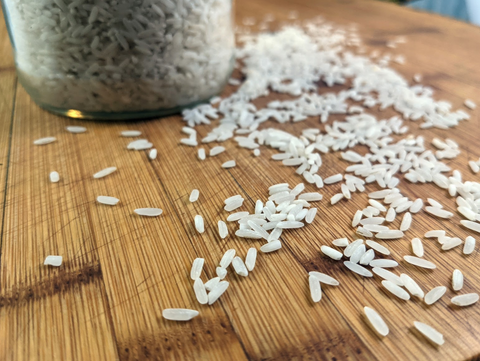
How To Cook Rice Without Ruining Supper
Your primary feat in this dirty rice recipe and all others will be to cook rice without ruining it. Because rice is the foundation of dirty rice, bad rice makes bad dirty rice. One way to avoid it is to allow someone else to cook the rice, then purchase it from them! Many dirty rice lovers actually contend that using day old rice is a better strategy, as the slight drying allows the grains to better remain separate. But the chances that a local restaurant has cooked rice in rich broth aren’t always great, and so we need to discuss cooking it oneself.
Quite simply, rice should always be prepared gently and with loving respect. For dirty rice we recommend using Carolina Gold rice, or some other non-aromatic strain. Non-aromatic rice absorbs the flavor of dishes rather than aromatizing the other ingredients.
Because dirty rice is rice-based rather than broth-based, we like to wash our rice carefully but thoroughly in several rounds of water to rid the grains of excess starch. This prevents the build-up of gumminess between the grains, and allows them to remain separate (yet still equal and unified.) However, if we were preparing a soupy dish with rice, we would throw unwashed grains into the pot. The excess starch would then act as a gentle broth thickener.
The usual ratio for rice-to-liquid is 1 part rice to 1.5 parts water or stock. Always cook rice low and slow so that the grains don’t burn to the bottom of the pot. Better yet, finish your rice in a rice cooker, crock pot, or other electric slow cooking device after you have incorporated the other cooked ingredients. In this way you’ll avoid screwing it up, and you’ll gain a little extra time to write a cheerful postcard to a dear friend, or even send them a gift.
Our next items of concern: Aromatics and the “Holy Trinity” of Cajun and Creole cooking.
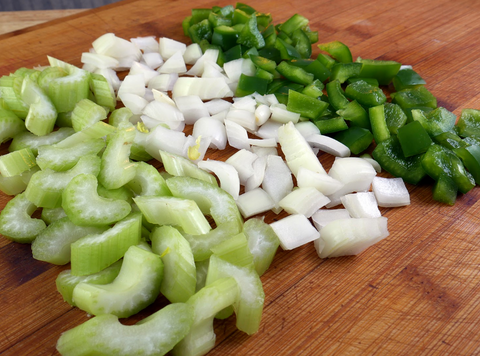
Mirepoix, Sofrito, and the Holy Trinity: Aromatics in Cajun and Creole Cooking
To understand aromatics and spices in Cajun and Creole cuisine, we must first take a mildly inconvenient wide view of the complex culinary influences that shape the regional cooking. At the foundation of this merry muddle we have French, Spanish, Portuguese, African, Caribbean, and various Native American influences.
Bearing that in mind, the aromatic basis for countless Cajun and Creole dishes is diced onion, green bell pepper, and celery. It’s known as Holy Trinity in Louisiana and the greater South, and you’ll often hear it referred to as “Trinity” for short in the kitchen. These ingredients are lightly fried in lard or oil to release the aromatic properties and vegetal sweetness. Some recipes—such as this one—may call for the addition of tomato, herbs, or spices.
Though the technique of blooming aromatics in hot oil is nearly as old as cooked food itself, Trinity has its roots in both the mirepoix of French cooking and the sofrito of Spanish and Portuguese cuisine. The purpose of the technique is establishing a mildly sweet perfume foundation in a dish.
That brings us to our proteins...

Smoked Andouille Sausage for Fat and Heat
Common contemporary American dirty rice recipes call only for ground beef or bulk breakfast sausage as the protein. But right now that’s for lazy normies. In order to heave ourselves further in the direction of Cajun-Creole Flavorville, today we have elected to use a spicy smoked andouille sausage.
You have some options regarding the format of andouille sausage you use, and how you process it. You can start with fresh, bulk andouille if it’s available in your area, and brown in the pan as you would ground beef, before the addition of Trinity. Or, you can use raw, unsmoked links in a similar manner. Grill or fry the links whole, then slice or chop, and brown a little more before adding Trinity.
We happen to enjoy a bit of smoke flavor around here, so we opted for smoked, fully cooked, semi-dry andouille. You can cut the smoked links into cubes, much like bacon lardons. Once rendered, they will become nuggets of spicy, smoky, fatty texture throughout the rice.
If you have a meat grinder handy and know how to use it safely, you can also grind the smoked links coarsely before rendering. This disperses the protein more evenly throughout the rice, but it’s not necessary. It’s an option.

Smoked Herring for the Dirty
“Smoked herring as a condiment?” you ask. “Really?!” you shriek.
Oh, you betcha. We’ve told you about how a subtle dollop of anchovy butter kicks up the yum in just about any savory dish. In this case we’re replacing the earthy minerality of chicken livers with our own smoked herring. Ordinarily we don’t like to tell you to mash or chop our fish beyond recognition, but you want the effect of the smoked herring to be evenly dispersed throughout the dish.
You may also first balk at the addition of fish at all, but here’s what you need to know about Wildfish Smoked Herring if you haven’t had it: It is a rich, savory, umami bomb in a can. It’s almost beefy, like pot roast from the sea, and so it lends weight to the other flavors.
Furthermore, all animals tend to play nicely together in Cajun and Creole cuisine, pigs and fishes especially. So don’t worry about it. Proceed undeterred.
If you're still with us, proceed to Part II, here's the recipe!
